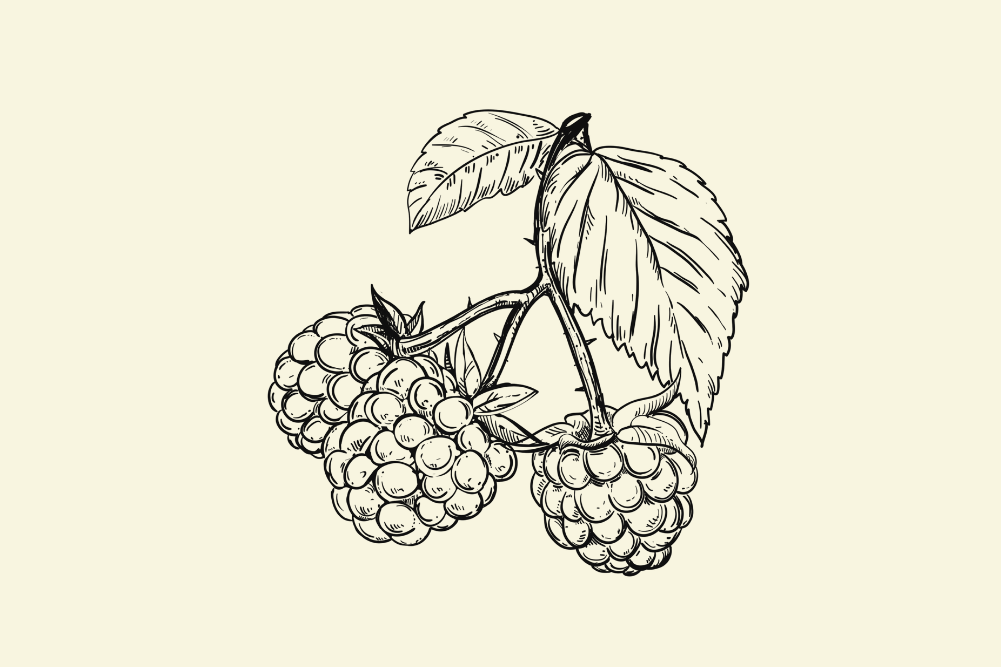How to nourish and protect your liver
How to nurture and protect your liver
According to Ayurvedic principles, the liver is the principal site of agni (bodily fire) and provides energy for all other functions of the body. Similarly, in Chinese Medicine, the liver is responsible for the smooth flow of qi, or energy, around the body. There is no doubt that this, the largest internal organ, plays a crucial role in our health and wellbeing.
Not only is it the major fat-burning organ in the body, the liver is also responsible for maintaining blood sugar levels, storing important vitamins, iron and copper, regulating the proteins that cause the blood to clot when necessary and detoxifying harmful substances. Keeping the liver from becoming sluggish can be a preventive to a large number of ailments.
Sluggish liver
There are many signs that could indicate a sluggish liver. Some include:
- Digestive ailments: A sluggish liver can often correspond with a sluggish digestive system as agni plays a large role in digestion. Other digestive/liver-related ailments could include being overweight, having a sluggish metabolism, suffering from indigestion, irritable bowel syndrome and abdominal bloating.
- Moods: Unpleasant moods, particularly depression and a foggy head, often correspond to a sluggish liver.
- Frequent or chronic fatigue: too high an intake of saturated fats and not enough raw vegetables frequently leads to a sluggish liver and corresponding fatigue.
* Allergies: If the liver is sluggish, allergies, including hay fever, skin rashes and asthma, can be either exacerbated or triggered. - Headaches: Headaches that arise from a sluggish liver are all too often dealt with through the use of drugs, which only serve to increase the livers workload in breaking down drugs.
- Sugar cravings, hypoglycaemia or unstable blood sugar levels: Many people with a sluggish liver have little control over their addictive, compulsive sugar cravings and cannot do without their fix.
- An overburdened immune system: The liver and immune system are intimately connected. If the liver is sluggish, inevitably the immune system will be weakened and the body becomes prone to infections and illnesses.
- Coated tongue and bad breath: A healthy tongue, ayurvedically speaking, should be pink, clear and with no white coating. A coated tongue is often an indication of excessive toxins that the liver has not been successful in eliminating or reducing. (Use a tongue scraper, which you can buy in most Indian or natural health shops, to remove this layer on the tongue, both in the morning after brushing your teeth and at night.)
Yoga asanas
The following yoga asanas are particularly beneficial for strengthening a sluggish liver and should be practised on an empty stomach. Remember to allow four hours to digest a heavy meal and at least two and a half hours to digest a light meal before practising yoga.
Note: although the spinal twisting movements are beneficial on their own, the benefits are best received when practised after completing a set of forward and backward bending asanas.
Bhu Namanasana (spinal twist prostration pose)
Sit on the ground keeping your spine straight and legs outstretched. Take a deep breath in and then hold the breath as you twist to your right, placing both your hands on the ground to the side of your right hip and using your arms and shoulders as levers. Twist the trunk of your body to a 90-degree angle. Slowly, as you exhale, bend your torso down towards your hands and take your forehead towards the ground. If possible, place your forehead on the ground, keeping your buttocks on the ground. Hold your breath as you hold the asana for a short time, relaxing your back, and when you need to breathe in come up as you inhale. Exhale as you centre your body.
Repeat the movement on the other side. This constitutes one round. Repeat five rounds, synchronising the movement with the breath. As this asana is not as advanced as Ardha Matsyendrasana, it can be used as a warm-up spinal twisting asana at the beginning of a series of spinal twists.
Bhu Namanasana should be avoided by women more than two months pregnant. Expert guidance is advisable for those with hernia or peptic ulcer.
Meru Vakrasana (spinal twist)
Sit with your legs stretched out in front of you. Take a deep breath in. Hold the breath as you twist to your right side first, placing your hands on the ground behind you, keeping your right hand close to your left buttock with your fingers pointing away from your body and bending your right arm slightly. Bend your left knee and take your left foot across your right leg, placing your foot on the ground on the outside of your right leg. Twist as far to your right as you can, using your arms to lever yourself. Make sure you keep your spine straight and your buttocks on the ground.
As you hold the asana, relax your back. When you need to breathe in, return your body to a central position as you inhale. Practise this five times on the same side and then take a few relaxing breaths in a comfortable neutral sitting position before practising the same asana five times on the other side.
As with Bhu Namanasana, Meru Vakrasana is a preparatory asana for Ardha Matsyendrasana. It is advisable to practise Meru Vakrasana before attempting any inverted asanas.
Merudandasana (spinal column pose)
Sit with your legs stretched out in front of you and then bend your knees and place your feet on the ground close to your buttocks and hip distance apart from each other. Take hold of your big toes. Slowly lean back, balancing on your coccyx. As you gain your balance, begin to straighten your legs and arms, raising your legs as you do so. Once you are steady, keeping your spine straight, separate your legs as much as you can. As you hold the final position, focus your eyes on a fixed point, but make sure you keep the facial muscles relaxed and dont strain your eyes. When you are ready to come out the asana bring your legs together in front of your body, bend your legs and lower your feet to the ground.
If you prefer not to hold the final pose for longer than one breath, synchronise your breath with the movement by inhaling before you lift your legs, holding the breath as you lift and separate your legs and exhaling as you complete the asana, lowering your feet to the ground. Practise five rounds.
Its not advisable for those with high blood pressure, heart ailments, slipped disc or sciatica to practise Merudandasana. Merudandasana tones all the abdominal organs, especially the liver, and strengthens the abdominal muscles.
Utthita Hasta Merudandasana (raised hand and spine pose)
Utthita Hasta Merudandasana is a variation asana of Merudandasana, so the instructions for it are just the same except that once your legs are straight theyre simply held there without separation. Hold for as long as you feel comfortable. If you decide to hold the asana for an extended period of time, make sure you keep your breath moving slowly and deeply through your body.
Ardha Matsyendrasana (half spinal twist)
Sitting on the ground, stretch your legs out in front of you. Bend your left leg and fold it in towards your body, close to your right buttock. Then bend your right leg and place it on the outer side of your left leg, keeping it bent with the knee pointing skywards. Take your left arm to the outer side of your right leg and straighten it so your left hand is either holding or moving towards your right foot. Place your right hand on the ground behind you, aligning it with your spine but keeping it about a foot away from your spine. If you prefer, then bend your right arm and wrap it around the back of your body along your waistline. Those who are more flexible may move your right hand up your back and place it between your shoulder blades with your fingers pointing up. This helps to keep your spine straight and assists expansion into the chest area. Now take a deep breath in and breathe out as you twist your spine and look back over your right shoulder. If your right arm is still on the ground, use it as a lever so you can twist back as far as possible without having to use your back muscles. Do the same on the other side.
As you hold the pose, breathe deeply and slowly, without strain. Start by holding the pose for just two or three breaths on either side of your body and progress towards holding the pose for up to one minute on either side.
As with Bhu Namanasana, Ardha Matsyendrasana should be avoided by women more than two months pregnant and expert guidance taken for those with hernia or peptic ulcer.
Other yoga poses that are good for the liver include Paschimottanasana (back stretching pose) and Ardha Padma Padmottanasana (half-lotus leg-stretch pose).
Diet
Everything we eat, drink, inhale or come in contact with affects our liver and immune system. Therefore, diet plays a crucial role in either weakening or strengthening the liver. Here are a few points relating to diet that help to ensure the liver is loved correctly:
- Avoid oily, fried foods as they are heavy on the liver.
- Avoid tea and coffee, or, if you take them, make sure they are weak and mixed with soymilk and not taken on an empty stomach.
- People whose liver is sluggish often find that their tolerance to alcohol drops significantly. While before they may have felt tipsy after quite a few drinks, they begin to feel tipsy after just one or two and feel very hung-over the next day. These are signs the liver is struggling. Alcohol is best avoided if the liver is sluggish.
Herbs
Milk thistle is widely recommended for improvement of liver function and for its liver protective qualities. Dandelion root, artichoke, Oregon grape root and turmeric are all considered good herbs for the liver.
Other diet tips to make your liver happy
- Regular use of the following products is highly recommended for promoting good liver function: cumin, fennel, caraway, lemon, pomegranate, ginger, laurel leaves, plums and figs.
- Thyme tea, taken occasionally, promotes agni and is excellent for the liver.
- Make sure you eat only when you are hungry.
- Drink 8-12 glasses of filtered water a day, between and not during meals.
- Avoid refined sugars, artificial sweeteners, jams and sweet preserves, which the liver converts to fat.
- Eat carob instead of chocolate if and when you have a sweet tooth.
- Dont reheat food. Cook and prepare the right portions so food doesnt have to be reheated. Eat freshly cooked food as much as possible.
- Eat organic food.
- Keep your protein up to scratch by eating soybeans, adzuki beans, kidney beans, peas, chickpeas, lentils and legume sprouts.
- Vitamin C is the most powerful antioxidant vitamin for the liver and reduces toxic damage to liver cells from chemical overload. Make sure you get enough vitamin C through either fresh vegetables and fruits (oranges are a great source) or a vitamin supplement.
- Include green tea and dandelion tea in your diet as both have a loving effect on the liver.
Liver shake
Fresh juice shakes can do wonders for keeping the liver strong and healthy, but make sure you dont overload on too many juices as they are high in sugar and low in fibre. Heres one to try:
1 cup soymilk
1 ripe banana
12 strawberries
2 tablespoons LSA
1 tablespoon honey
Blend together and serve immediately.
Note: LSA is a combination of ground linseeds, sunflower seeds and almonds. If you wish to make your own, use two measures of linseeds, two measures of sunflower seeds and one measure of almonds.
Emotional healing
According to Dr Christiane Northrup1 the liver, as it falls into the area of the third chakra, is part of the emotional centre and therefore relates to emotional centre type issues. These include taking care of yourself rather than everybody else, body acceptance and self-esteem. Useful questions to ponder to help yourself become aware of or overcome emotional issues that relate to the liver include:
- Are you afraid of responsibility? Or do you feel you need to be responsible for everyone and everything all the time?
- Do you respect yourself? Do you confidently make changes for example, to your hairstyle and feel good even if others are critical?
- Are you in a relationship with someone out of fear of being alone?
- Are you afraid to take care of yourself? What might happen?
- Do you constantly seek approval of others? If so, why?
Chinese medicine
Chinese medicine recognises the connection between issues of the liver and emotions such as anger and frustration, as do intuitive healers Caroline Myss and Louise Hay. According to Chinese medicine, painful shoulders and a lump in the throat (known in TCM as plumbstone throat) are classic features of stagnation of liver qi, or energy. So, if your liver is playing up, it may be that you could benefit from addressing the role of these emotions in your life.
Breath
Negative emotions such as anger, frustration, greed, jealousy and so on are part of everyones life to varying degrees, but we need not be controlled by them. Notice how your breath becomes short when you are experiencing these emotions, how there is a feeling of contraction, of shrinking from within. If the knowledge from alternative medicines suggests that anger and frustration contaminate and weaken the liver, we should be doing everything we can to stay calm and cool! This is where the breath comes in.
According to spiritual master Sri Sri Ravi Shankar, founder of the Art of Living Foundation, each emotion has a corresponding pattern of breath and, with meditation, silence and helpful breathing techniques, the source of negativity is nipped at the root. Yogic breathing practices work to eliminate and reduce negativity, in both the mind and emotions. Therefore, gaining a few skills in breathing techniques will have enormous benefits for your liver.







